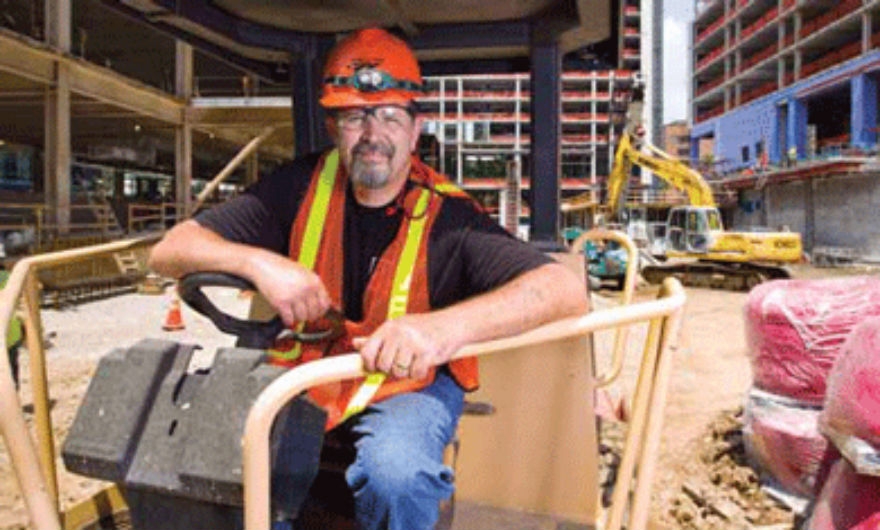Robodocs

Story by Renee Cree, SMC ’12
When Barbara Singleton, 52, went to her doctor’s office on a chilly fall day in 2011, her heart was the last thing on her mind. She was meeting with her doctor for a routine physical, but as the doctor listened to Singleton’s chest, she frowned. She did not like the sound of a murmur in Singleton’s heart. The murmur itself was nothing new to Singleton—she had known about it since she was 19. Many heart murmurs are innocent and require no medical treatment. But not in Singleton’s case.
Michael Miller, 57, a construction worker in Philadelphia, also knew he had a heart murmur, and like Singleton, he had not thought much about it. But during a physical, Miller learned that his heart had become enlarged. After testing, his doctor concluded that the problem was due to mitral–valve prolapse. The condition occurs when the mitral valve of the heart, which forces blood from the left atrium to the left ventricle, does not close tightly and causes mitral regurgitation, a backflow of blood.
According to the Mayo Clinic, mitral regurgitation often causes a murmur in the heart, and can progress slowly over decades. Symptoms can develop so slowly that patients—such as Singleton and Miller—do not even notice them.
“I hadn’t felt shortness of breath, fatigue or any other outward symptoms,” says Singleton, a dairy farmer who spends hours each day doing strenuous outdoor work. “I didn’t realize how serious it was.” Miller echoes that sentiment. “I had been seeing my doctor regularly for physicals, and felt totally fine.”
“Mitral–valve disease is largely undertreated,” says T. Sloane Guy, associate professor of surgery in the School of Medicine and chief of cardiothoracic surgery at Temple University Hospital (TUH). “It’s innocuous; it doesn’t present with serious symptoms all at once.” He likens it to smoking. “You might not notice anything wrong today, but over time, it causes significant damage.”
If left unchecked, mitral regurgitation can lead to an infection in the heart, pulmonary hypertension or heart failure. A study published in July 2010 in The New England Journal of Medicine noted a mortality rate of 3 percent per year among patients who had moderate to severe mitral regurgitation, but showed no symptoms. Mitral regurgitation is found in about 20 percent of people older than 55, but surgery is not always needed.
Guy says that an echocardiogram, or echo, can quickly determine the difference between something benign and something more serious. Echoes performed by their respective cardiologists showed that Singleton and Miller did have damage due to mitral regurgitation and required surgery. Both were referred to Guy and TUH, to try a relatively new procedure in the region: robot–assisted endoscopic mitral–valve repair.
MAN VERSUS MACHINE
During traditional heart surgery, the surgeon opens the ribcage like a set of double doors. He or she makes a long cut near the breastbone, or sternum, and moves the muscles to reach the heart. The doctor then cuts into the left side of the heart to reach the mitral valve.
But in robot–assisted endoscopic mitral–valve surgery, Guy makes five small incisions in the patient’s side, each only a few millimeters wide. He then inserts a small camera that lights and magnifies the heart, so he can see a high–resolution, three–dimensional image of the heart broadcast on a large screen. He directs robotic instruments inserted into other incisions via devices similar to video-game joysticks.
For patients, the pros of the procedure are simple. “People don’t like big holes in their bodies,” Guy says.
After traditional heart surgery, patients are advised not to drive for four to six weeks; they cannot lift anything heavier than a milk carton. Additionally, they are often prescribed strong narcotics for pain management, are left with a huge scar and have a long recovery time in the hospital. But for patients who have the minimally invasive procedure at Temple, their total recovery time is a matter of weeks. Sometimes, it is only days.
“I went in on Valentine’s Day—a fitting day for heart surgery,” Singleton laughs. “I came home three days after surgery and was already doing light housework, washing dishes and that kind of thing. Within a few weeks, I was back out on the farm, but monitoring my activity levels.”
Singleton’s uncle had traditional heart surgery, during which the chest cavity is opened, and says his full recovery took close to three months. “I would have hated to go through traditional surgery; the downtime is so much different,” she says. "I wasn’t stiff or sore when I got home. I didn’t even need the pain medication they prescribed me.”
Michael Miller had the procedure a week before Singleton, “and was out that Friday,” he says. “I was up and walking around, and working with a physical therapist just a few days later.
“A friend of mine had traditional surgery the same week I had mine, and he was in the hospital recovering for three weeks,” Miller adds. “I still don’t think he’s 100 percent. But I felt better right away.”
TOMORROW’S O.R., TODAY
The mitral–valve repair procedures were the first to be performed in TUH’s burgeoning robotic surgery program. Since Guy’s arrival in 2011, the program has grown significantly: Surgeons perform approximately two robotic–assisted surgeries per week, ranging from cardiac procedures such as coronary bypass grafts and atrial septal defect repairs, to other specialties including gynecology, urology and thoracics (parts of the chest unrelated to heart function).
The first–ever surgical procedure to use a robot was performed about 35 years ago, making it a fairly new surgical field. By hiring talented doctors, expanding the robots in other specialties and purchasing more high–tech equipment, Guy hopes to make TUH one of the nation's leaders in robotic surgery.
The first step toward that goal came in April. Daniel Eun, MED ’01, newly appointed vice chief of robotic surgery and director of minimally invasive robotic urological oncology at Temple, performed the nation’s first robotic–assisted repair of an obstructed kidney by operating through a single, small incision in the patient’s navel.
“Using a platform that improves the surgeon’s ability to manipulate the instruments with greater range of motion through that single incision truly brings the greatest benefits to patients,” Eun explains.
“If we want to attract more patients to TUH, we have to do things that other places aren’t doing,” Guy says. “My goal is to develop a high–volume, multi–specialty robotic program that is on the absolute cutting edge, but that we do it in the best interest of the patients. I want robotics to be in every specialty where it’s beneficial.”
Listen to a regular heartbeat, versus one with mitral regurgitation.
